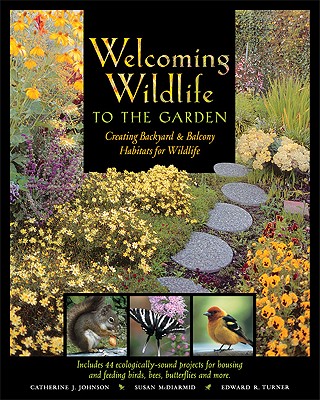 There are many books about wildlife gardening, but few that focus on balconies. It was for this reason I ordered Welcoming Wildlife to the Garden: Creating Backyard and Balcony Habitats for Wildlife
There are many books about wildlife gardening, but few that focus on balconies. It was for this reason I ordered Welcoming Wildlife to the Garden: Creating Backyard and Balcony Habitats for Wildlife online, to see what information it offered on balconies in addition to wildlife design. The first thing I noticed about the book were the illustrations, which are beautifully done and do an excellent job highlighting points throughout the book. The preface has a good summary about the importance of urban wildlife and the introduction summarizes tips about the proper mindset for planning wildlife habitat. One of the highlights is how to observe local plants and wildlife to get a sense for, and understand their lives. Another key point in this chapter is the idea of working with others. Individual landscapes can have a positive effect on an area, but many, planned and connected together, can have a community-wide impact, for people as well as wildlife. The book talks about sharing tips and advice with neighbors, but also goes further by suggesting starting wildlife gardening clubs. One of the programs used as an example in this chapter is “Green Strees” in Vancouver, B.C., a program where citizens adopt traffic circles and traffic bulges and plant and maintain them with some assistance from the city. This is an excellent program, one that I intend to delve into deeper.
The first chapter gives a good, brief description of some important habitat concepts such as edges, succession and layers, along with excellent illustrations. The rest of the book gives a good, basic summary of planning and designing habitat, but for the most part, it doesn’t offer much more than most other books on the subject. The chapter on birds is very heavy on bird feeders and seed and features many pages of bird feeder projects. There are also many pages of nest box projects and a summary of where specific bird species nest and what type of seed they prefer. This list would have been more helpful, in my opinion, if it highlight what natural foods the birds eat such as seeds and/or insects. The project pages, which are beautifully illustrated, are unfortunately in the middle of chapters and as such, in the middle of sentences. It makes reading the book a bit tricky.
The following chapters on hummingbirds and butterflies don’t describe much more than plants and feeders and despite acknowledging the fact that butterflies are not known to use butterfly houses, there are nonetheless, a couple pages of construction of houses. However, there is one project in the butterfly chapter I particularly liked, especially for apartments or condos. The “Butterfly Ledge” project is made of a small log or branch, attached to a piece of plywood which fits inside the window ledge. Inside the log are compartments for plants and on the ends, room for a sunning stone and a mudpatch. Although I like this idea, it may not be very effective on the sides of buildings because those areas tend to be windy, especially on apartment buildings, and butterflies prefer areas of low wind. However, I think this would work very well for bees and even hummingbirds. It’s certainly an intriguing project.
The “Bugs and Burrowers” chapter describes a number of insects and spiders common to gardens, but gives limited information about attracting beneficial insects. There is slightly more detailed information about bees in the chapter, but there are excellent, very detailed and free documents online for both of these topics. See Landscaping for Wildlife for resources on this blog. Indoor and outdoor composting is also described along with more project pages.
Reptiles and amphibians are addressed in a chapter with basic descriptions of the various families, but again, there is minimal design information. Some of the project pages are good and one features an unmortared stone wall that would be an excellent resource for an earlier post on this topic, Stone Walls for Wildlife. Another nice project page features a variety of examples for amphibian homes, including using terracotta pots, rocks and wood.
The bats chapter gives some basics about the life cycle of bats and bat house placement, but again, there is better, more detailed documents available online. The mammals chapter mostly discusses them as pests instead of attracting them, although it does give good summaries of the lives of common backyard mammals.
The balconies and rooftops chapter discusses important topics unique to these spaces such as pros and cons of trees, how to container garden and very importantly, how to make the most efficient use of space. There are some good examples of types of containers to use and how to add bird baths and nesting sites. The book also discusses educating neighbors and the challenges of welcoming wildlife to a balcony without making a mess for neighbors in apartments below. Some common balcony birds are discussed such as Starlings and House Sparrows, but unfortunately hummingbirds are not. Overall, it’s a good summary, but not terribly in-depth.
The planning and designing chapter offers good directions for a homeowner on how to map a site, what to look for and how to analyze soil and plants. The chapter dedicated to landscaping for birds is mostly a plant list, but also discusses lawns, dustbaths, and nesting. However, there are entire books dedicated to landscaping for birds that offer more details and direction. The water features chapter offers good project illustrations and directions for creating a flexible liner pond, concrete pond as well as fiberglass pond. Also of interest is a discussion and project page for bog gardens.
The final chapter is of true value because it discusses nature activities and how to interact with the wildlife garden. Suggestions such as butterfly counts, backyard bird counts and frog watch programs are ways to observe a wildlife habitat while contributing scientific data to these citizen science projects. These types of projects are very valuable for a great many reasons and a good way to appreciate the habitat that’s been created. Community volunteering is another example of nature activities and include ideas such as helping with tree planting projects, stream restoration or park trail maintenance. Finally, nature journaling is suggested and an excellent way to connect with and learn more about habitat. Some of the good ideas include observations, keeping mementos such as leaves or feathers, recording bird nesting and behavior and taking photos. There are a number of wood projects at the end of this chapter for structures such as arbors and a bench.
Overall, this is a good, basic book. However, there are books on many of the topics covered in this book, such as landscaping for birds or butterflies, that delve much deeper into the subjects. There are also many excellent, detailed and free documents online from university extensions, cities and conservation organizations. See Landscaping for Wildlife. There is not a lot offered in this book that isn’t offered in many other wildlife garden books with the exception of the discussion of balconies and the many pages of projects. For someone just starting out though, it’s not a bad introduction to wildlife gardening design.
Welcoming Wildlife to the Garden: Creating Backyard and Balcony Habitats for Wildlife
Catherine J. Johnson (Author), Susan McDiarmid (Author), Edward R. Turner (Illustrator)
Hartley and Marks Publishers (August 9, 2004)
List Price: $21.95 Amazon Price: $17.12
Read more book reviews from The Metropolitan Field Guide
Book Review:: an obsession with butterflies, our long love affair with a singular insect
Book Review:: Attracting Birds, Butterflies and Other Backyard Wildlife
Book Review:: Urban Wildlife Habitats: A Landscape Perspective

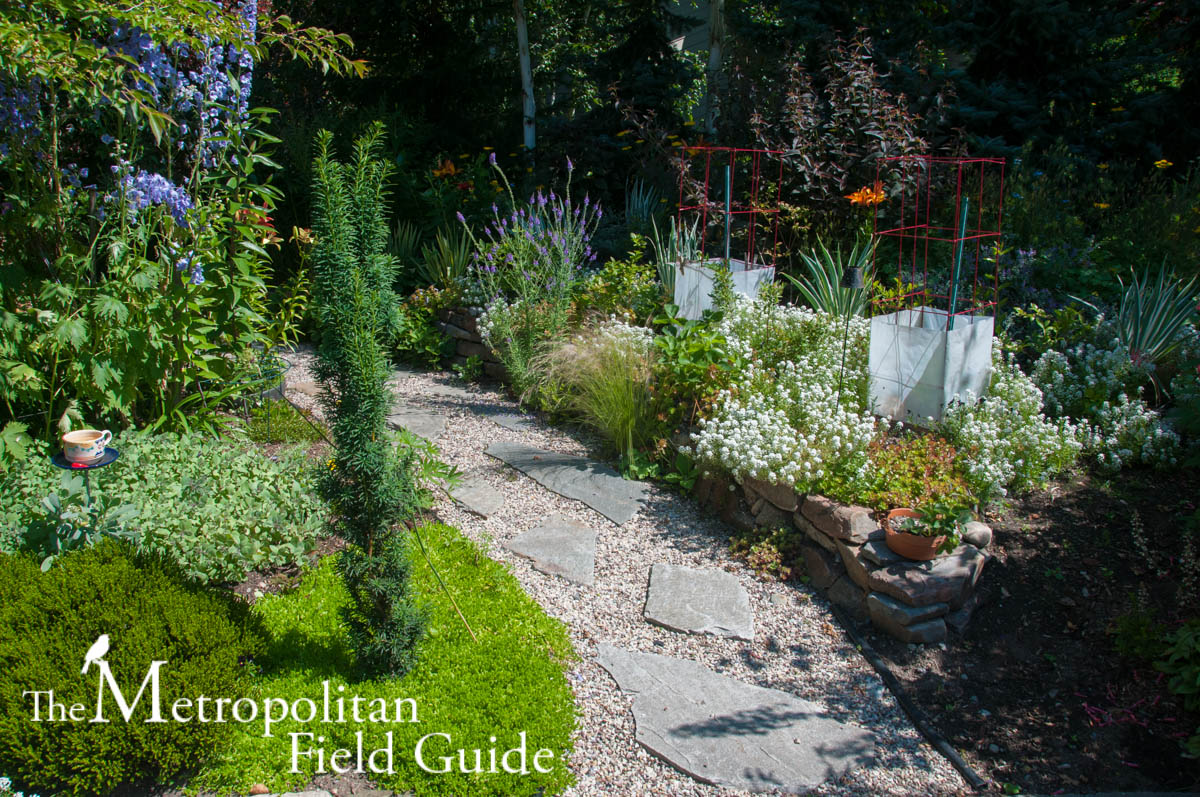

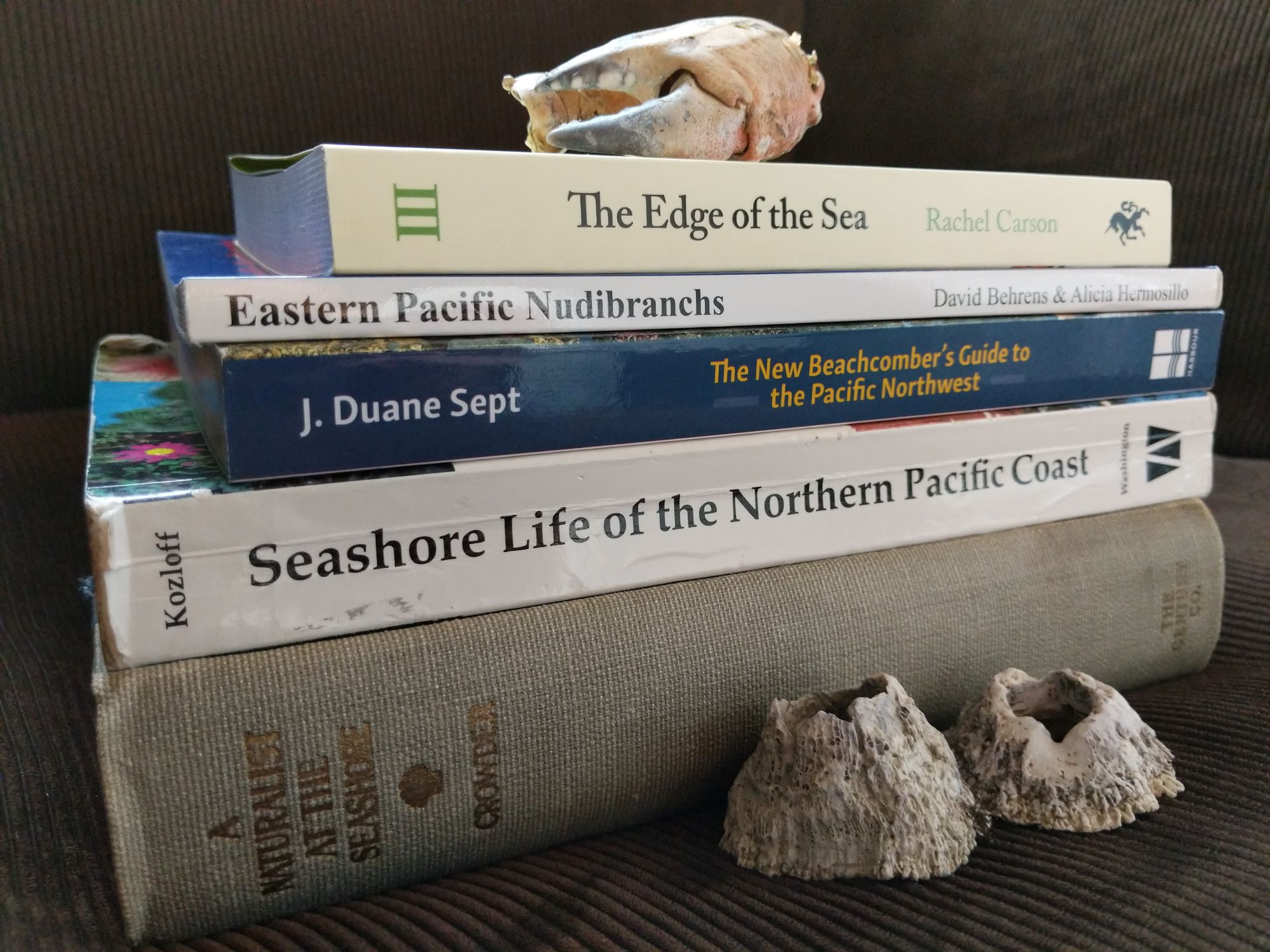
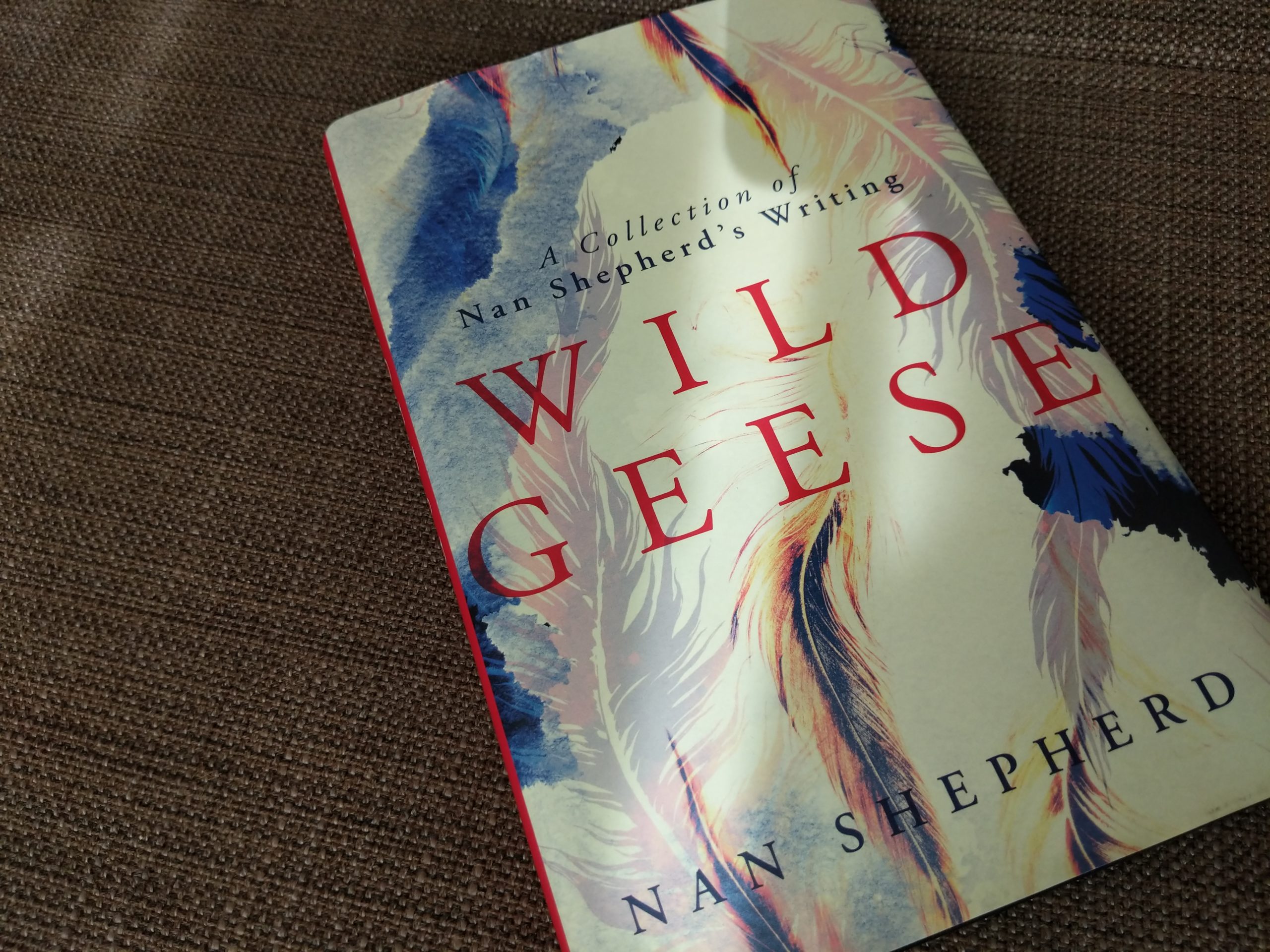
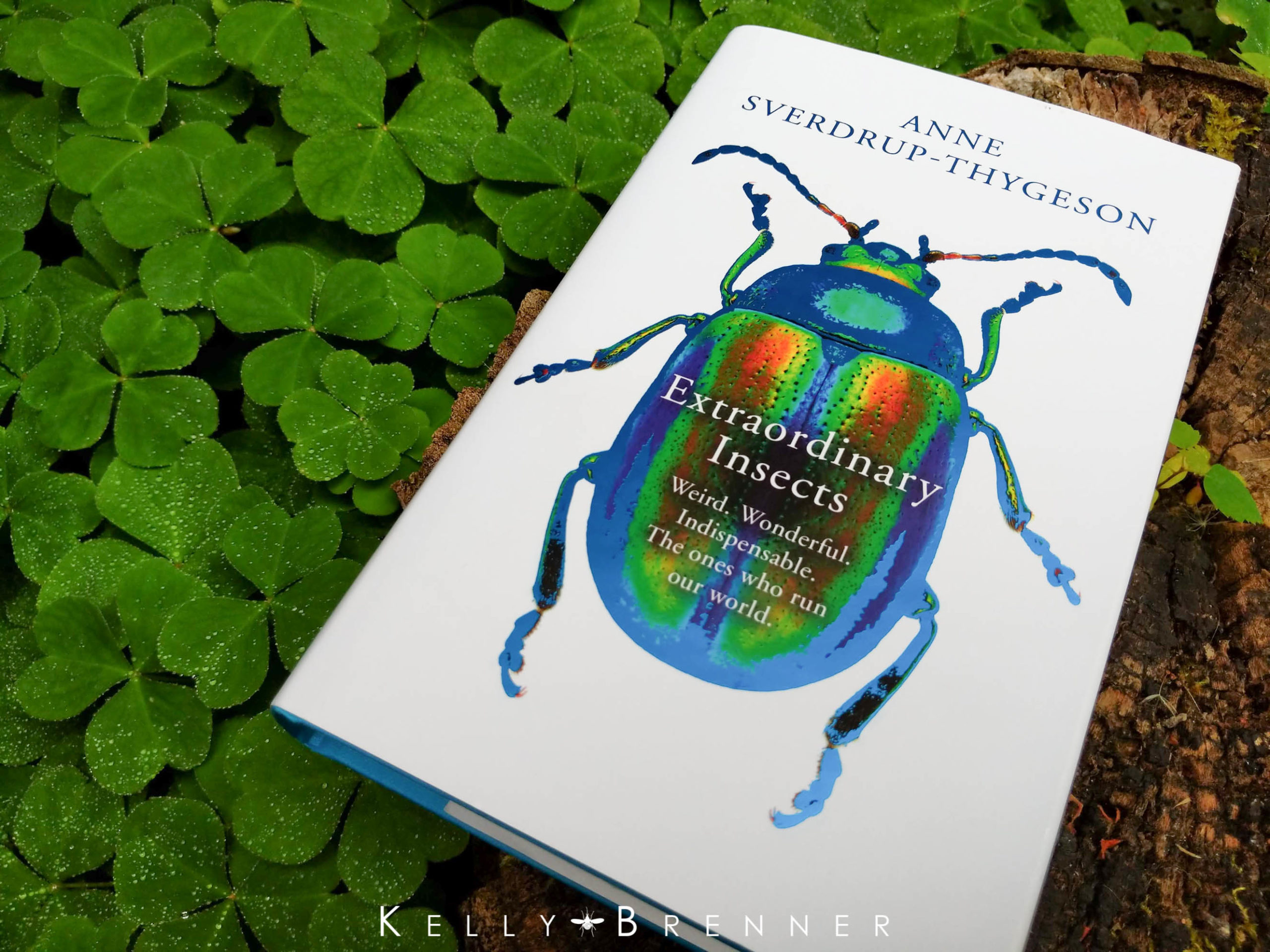

Hello!
Looks very interesting and important book.
But how can I get one copy, because I live here in Finland?
I have also written two books about wildlife and gardens, and would be very eager to see the book.
Do you know are the books delivered in Finland, too.
Mr. Riku Cajander
biologist, environmental journalist.
Terve Riku!
I would recommend the Book Depository to buy this book in Finland. I have ordered books from them before and I have a friend also in Finland who buys books through them. They have free worldwide shipping too.
http://www.bookdepository.com/book/9780881792010/Welcoming-Wildlife-to-the-Garden
Can you tell us more about your books? I would like to hear more about them!
Glad to hear from somebody in Finland, I’ve visited Helsinki and I look forward to going back, it is a wonderful country.